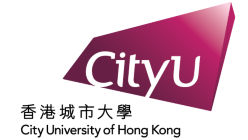
CityU Shenzhen Research Institute is its permanent base for applied research, incubation, and professional education in mainland China.Credit: City University of Hong Kong
Fuelled by government and business initiatives, the Guangdong-Hong Kong-Macau Greater Bay Area (GBA) is becoming a hub for innovation and economic growth. A key factor in its success lies in transforming research findings into applications that bring real-world benefits through collaboration between industry and academia. Recognized as an international university committed to research excellence, City University of Hong Kong (CityU) is contributing to this transformation process through advanced technologies developed by some great minds from around the world.
Fostering research and innovation in Dongguan
A major move by CityU to foster research and education cooperation in the GBA is the development of CityU Dongguan campus at the centre of the Guangzhou-Shenzhen Technology Innovation Corridor.
Partnered with the Dongguan government and Dongguan University of Technology (DGUT), this 349,000 m² campus is designed to be a hub for education, research, and technology transfer. The new campus will first set up the CityU Dongguan Research Institute, then schools of science, engineering, medical and life sciences, and management, along with state-of-the-art laboratories. The subject fields are chosen to cater to the industrial development needs of the area.

The CityU Dongguan campus area designated in the Guangzhou-Shenzhen Technology CorridorCredit: City University of Hong Kong
This August, CityU started enrolling PhD students, who will study in both Hong Kong and Dongguan, specializing in neutron scattering, new materials, computer science and information technology, and the Internet of Things.
In fact, Dongguan is more than a manufacturing hub. It houses one of the largest science and technology infrastructure projects in China, the China Spallation Neutron Source (CSNS). Its construction is backed by technical support from a partnership between CityU and the Chinese Academy of Sciences (CAS), the CAS–CityU Joint Laboratory on Neutron Scattering Science and Technology.
“Given the proximity to CSNS and the growing research opportunities it brings, we can become a regional hub in neutron scattering science,” says Xunli Wang, a physics professor at CityU, and co-director of the joint lab.
As a powerful tool to examine materials at the atomic level, notably atom positioning and interaction, neutron scattering has important applications in physics, chemistry, and materials science. The joint laboratory has already tackled many challenging problems, including a recent study, led by Wang, revealing the multi-stage deformation process of high-entropy alloys. It enabled mechanistic understanding of the unusual strength of these alloys and their plasticity at ultra-low temperatures.
Wang is also studying the structure and dynamics of disordered materials, like liquid and glass, and the effects of disorder on their properties, by working on a total scattering instrument with his collaborators. To expand the collaborations, he co-established another joint lab in the GBA, bringing together expertise from CSNS, DGUT, and the University of Macau.
To boost research development and knowledge transfer in the region, CityU has also engaged in another hub for materials science in Dongguan, the Songshan Lake Materials Laboratory. There, Chunyi Zhi, a CityU materials science professor, is exploring industrial transformation of his research on wearable flexible batteries, and super-safe aqueous electrolyte batteries.

A pilot production line set up by Chunyi Zhi is turning out wearable flexible batteries.Credit: City University of Hong Kong
“As a perfect power solution for wearable electronics, our flexible batteries can be used for smart watches, smart clothes, or ECG garments,” says Zhi. His lab in Hong Kong is optimizing potential materials and studying their electrochemical energy storage mechanisms.
In Dongguan, Zhi has set up a pilot production line to enable mass production of laboratory prototype products, including wearable flexible batteries, and safe zinc-based aqueous batteries for large-scale energy storage. “We want to develop one of the world’s safest and most environmentally friendly batteries to meet emerging application demands,” Zhi says.
Zhi thinks the GBA should be considered as a whole. Hong Kong has gathered resources for high-end research, but it is less competitive for mass production. Places like Dongguan have battery equipment manufacturers, and Shenzhen gathers battery current collectors, packaging materials, and more. “There is a good division of work and efficient collaboration in the GBA,” says Zhi. “Our work, from scientific research to practical development, can be well supported here.”
Reinforcing strongholds in Shenzhen
The extension of CityU into mainland China started with the launch of the CityU Shenzhen Research Institute (CityU SRI) in 2001, which since has become CityU’s permanent base for applied research, incubation and professional education. It now houses 17 research centres and laboratories, and has 235 ongoing projects, ranging from new-generation information and communications technologies and high-end equipment manufacturing, to biotech and new materials development. Total funding exceeds 240 million yuan, received from private companies and various levels of governments in the GBA and beyond. These projects help nurture and strengthen emerging industries.
To enhance its industry impact in the region, CityU recently established the Futian Research Institute to further facilitate scientific and technological cooperation between Shenzhen and Hong Kong. It seeks to accelerate research innovations in materials science and engineering technologies, and bring greater societal impacts via collaboration.
“Our vision is to diversify our materials science and application research portfolio through the development of new research thrusts, projects and collaborations across Shenzhen, the GBA, China and the world,” says David Srolovitz, the institute director.
The institute hosts two major projects now. The advanced materials and additive manufacturing project, led by Jian Lu, a CityU materials scientist, focuses on pre-stress engineering and nanotechnology of advanced materials for aerospace applications. Its research includes enhancing the strength and ductility of nano-structured high entropy alloys, developing pre-stressed engineering materials for aircraft engines, application of 3D/4D ceramic printing of turbine blades, and devising multi-stable structures by surface mechanical attrition treatment.

Jian Lu works on novel metallic and nano-structured materials at the CityU Futian Research Institute.Credit: City University of Hong Kong
“With our expertise in new structural materials and pre-stress engineering, we will promote applications and industrialization of novel metallic and nano-structured materials, contributing to the development of aircraft and aerospace industries,” Lu says.
Another project, led by CityU professor, Fu-Rong Chen, builds infrastructure for the development of next-generation transmission electron microscopes (TEM). The initial focus is on key components for high space/time-resolved TEM. Novel electron optics is being investigated to improve microscopes for a diverse set of experiments and applications, from protein folding and molecular motors, to quantum materials and water science. Later, the focus will shift to technology transfer and spin-off of electron optics technologies.
“We are developing a world-leading electro-optical design and manufacturing centre in the GBA,” says Chen. “Our platform will lead to breakthroughs in quantum devices, future energy, life sciences, and medicine.”


